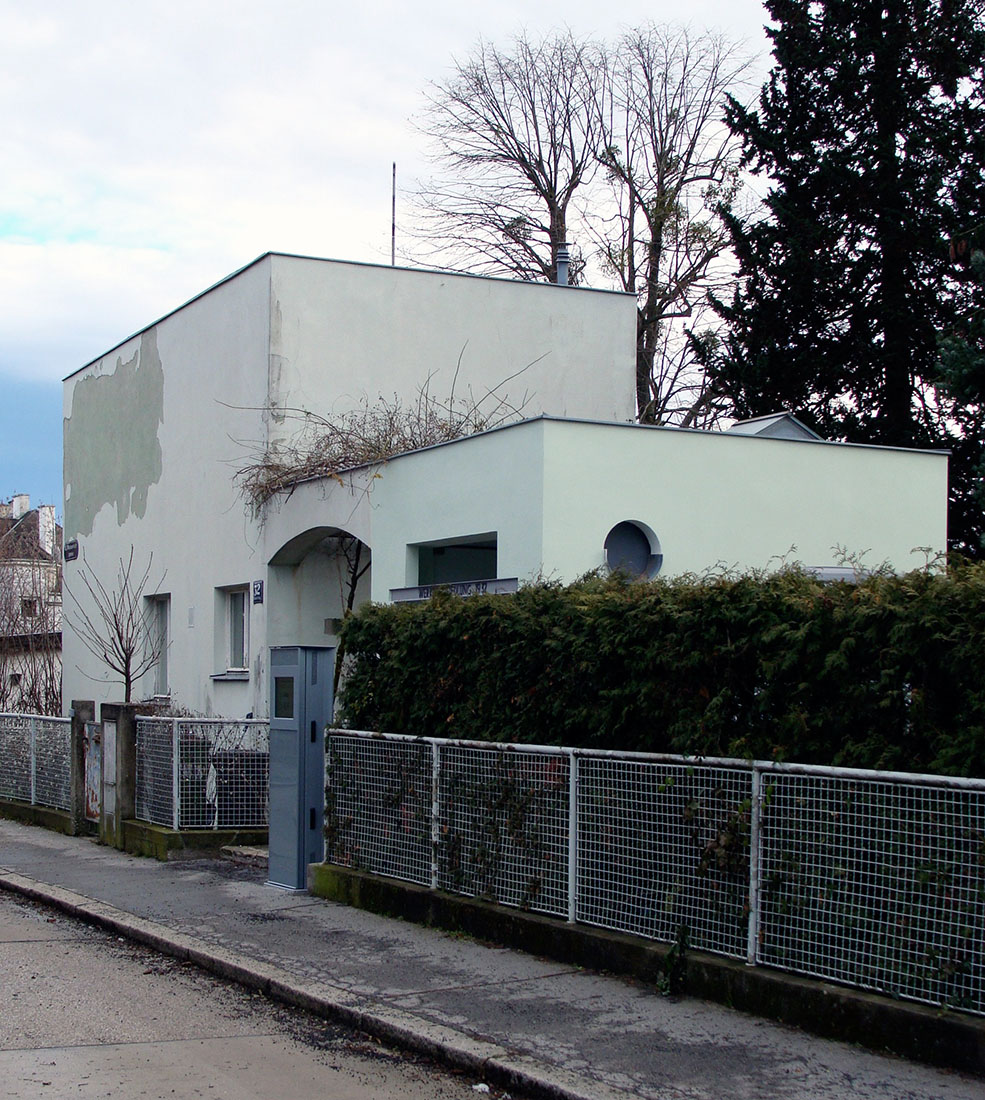 |
 |
 |
 |


House in Werkbund Settlement
Woinovichgasse 32, Vienna
1932
As initiator and artistic director of the Vienna Werkbund Estate, Josef Frank had in fact stated that the aim of the Werkbund Exhibition
was to create ‘single-family homes of the smallest kind’. For the exterior of the buildings were certain specifications mandatory,
such as a flat roof, uniform treatment of facades and fencing. But all in all, the architects were left considerable freedom of planning.
The intention was to create the widest possible range of terraced and detached houses, which would then serve as models
for future housing estates.
The building designed by Josef Frank goes well beyond the above mentioned requirements of a small home.
This house with a living space of more than 100 mē and a two-storey layout, was apparently designed in response to the wishes
of a potential buyer, who later pulled out. The building on Woinovichgasse 32 is located on a corner plot within the Werkbund Settlement,
and is connected with the neighbouring transformer station by means of a flat arch. The entrance of the building is slightly raised, so that
the ground floor is reached by steps at the side of the building. The layout of the ground floor shows a division into three zones.
The first zone starts with the entrance hall, flanked by the kitchen and a secondary room. The second Zone is occupied by the living room,
which runs the full width of the house. The third and fine zone contains the bathroom and two bedrooms, which are accessed by a small anteroom.
The first floor is considerably narrower, and is reached by an open staircase in the living room. This first floor is occupied by an additional
living space which runs parallel to the garden and is fronted by a terrace. The ground-floor living room has access to the garden through
glazed triple door. It opens directly on a terrace which is shaded by a pergola.
The layout of the ground floor corresponds to the vision of interior desing, described by Frank in his article "The House as Path and Place".
In this article he states: ‘A well organised house should be planned like a town – with streets and paths leading to places free of traffic,
where relaxation is possible’. Following ths credo, Josef Frank shifted windows and doors away from the main axes, so that he was able
to reat a series of discrete living spaces. For example the dining area was located on one side of the living room, the connection with the
kitchen was made by a door under the stairs. On the garden side of the same room was located a desk and various chairs. This two spaces
were divided by a day-bed and a table.